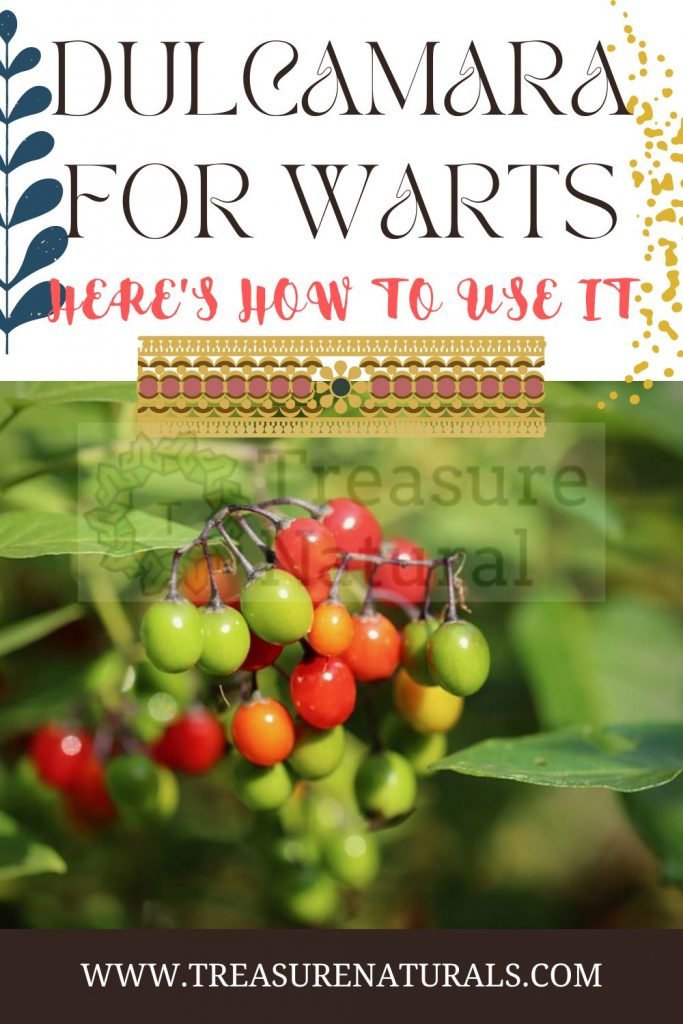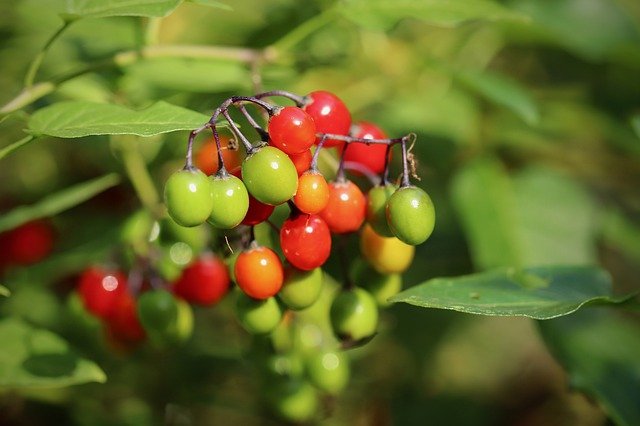
Dulcamara is a solanacea known for its purifying properties, strengthens the immune system and counteracts external agents that “poison” our body. Let’s see how it works to heal warts
Dulcamara, sweet and bitter, is a plant that lives in a humid environment, close to waterways and it is no coincidence that homeopathy uses it to treat rheumatism.
Its flowers, which open in summer, are purplish red, tending to purplish with the head turned downwards, the berries it produces are also red and beware, poisonous !.
The peculiarity lies in the leaves that change shape according to the height of the plant: elliptical at the base and narrow and pointing upwards.
The tincture and its homeopathic remedy are obtained from the buds and leaves.
Warts, what they are and how they are treated
Warts are infections that can appear on the feet or hands, often contracted in the swimming pool or gym.
They are attributable to a virus, the papillomavirus and, if the immune system is particularly weakened, it can also affect other parts of the body.
It is necessary to prepare a cure to stem the infection and to eradicate them and there are various therapies, including local ones, such as cryotherapy, electrocoagulation, or preparations to be applied which can however leave their mark.
We find many natural remedies that can come to the rescue in this case, including Dulcamara, enhanced by the mother tincture of Thuya for local use . Let’s see what it is specifically.
Property of the dulcamara
Thanks to the saponins contained in the plant, Dulcamara carries out antiviral, anti-inflammatory, anesthetic and antiseborrheic activities. It also contains an alkaloid, solasodine, which makes this remedy a cortison-like.
The main indications of Dulcamara for internal use are related to disorders such as asthma, bronchitis, epistaxis, and stimulation of the immune system .
The Dulcamara also finds indications in case of skin and mucous problems such as warts, in particular the flat and translucent ones, which sometimes appear on the hands, face and genitals, abscesses, eczema, herpes.
Dulcamara as a homeopathic remedy for warts: use and contraindications
Herbal medicine has abandoned the use of Dulcamara, which has instead been rehabilitated by homeopathy , “similia similibus curantur ”.
For the use of Dulcamara in the form of a homeopathic remedy, the opinion of the homeopathic doctor is always recommended, who will be able to indicate the most appropriate dilution for the disorder.
It is in fact a plant to be taken very carefully because it can give symptoms of intoxication or be badly absorbed by the body, even if the risk of toxicity at low dilutions is minimal: on the other hand we are dealing with “the poisoning of the skin with a poison ”, pass me the paradox.
We can find it on the market in granules and drops ; the granules are certainly more practical, to be dissolved under the tongue. Dulcamara is most often in a dilution of 5 CH and 9 CH, but as already pointed out, it is the doctor who must establish the dosage.
It is absolutely not recommended during pregnancy and during the breastfeeding period.
Dulcamara and mother tincture of thuya against warts

The Dulcamara can be associated to the mother tincture thuya for outdoor use, obtained from berries, indicated remedy for all types of wart.
We can brush the hydroalcoholic extract several times a day directly on the lesion, it will bring an irritative reaction to accelerate the renewal of the skin layers.
Thuya is included in the list of plants not allowed to be used in the food supplements sector signed by the Ministry of Health, so beware: the mother tincture is for external use only .
Some homeopaths also recommend taking Homoeopathic Thuya especially to eradicate colonization of warts and relapses; who is subject to this kind of disorder can take Dulcamara and Thuya to prevent and defend the organism.






